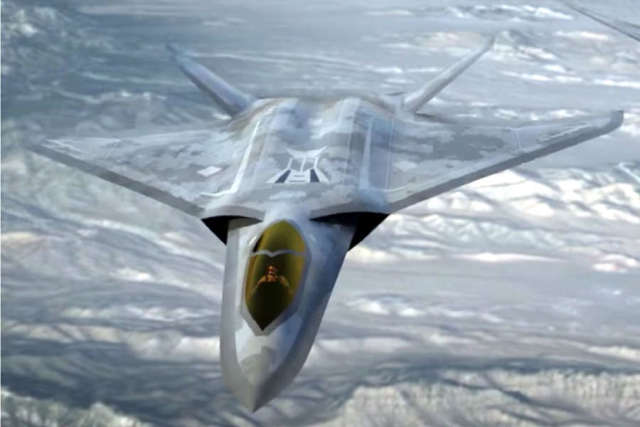The Pentagon told how the sixth-generation fighter will work
The Chief of Staff of the US Air Force, General Charles Brown, spoke about some of the features of the sixth-generation fighter created under the Next Generation Air Dominance Program (NGAD, Air Superiority of the new generation). Read more about the promising American project in the material "Gazeta.Ru».
Very little is known about the sixth-generation fighter. Northrop Grumman and the US Air Force have designed, built and already flown at least one of its prototypes in complete secrecy.
Since the disclosure of information about the first flight of the NGAD demonstrator in 2020 and until now, Pentagon officials have remained silent about the details of this project.
According to official data, the NGAD program includes the deployment of a whole family of related systems for conducting combat operations in airspace, which may include fighter jets, unmanned aerial vehicles, satellites in space and platforms in cyberspace. In this regard, NGAD is sometimes referred to as a "system of systems".
According to Charles Brown, NGAD is being created with "unique flight control software".
- the general noted.
This is an approach that, according to Charles Brown, the US Air Force has not used in any of its previous fighters. In addition, the general said that when designing a sixth-generation fighter, "a very special hull coating" will be used, and the role of the pilot will "fundamentally change."
"As a preliminary conclusion, we can state that NGAD is no longer an airplane. The fighter here is only part of the overall system. The future war in the air will be a joint use of advanced networks and interconnected families of various kinds of devices. Therefore, it is unlikely that the NGAD program will end with the appearance of a new fighter, as many imagine. This is not some kind of detached super-destroyer. By and large, the aircraft in the promising developments of the United States ceases to be a system-forming element. Its role will be reduced to being part of ultra-large weapons systems, where the main role is assigned to detection systems, navigation, control, communications, and means of destruction," writes the Defense News portal.
According to analysts of Foreign Affairs magazine, "the role of a human pilot in the NGAD system will be minimal."
"Most of the management functions will be performed by artificial intelligence. This does not make the NGAD an ordinary drone. Its tasks are much broader. This is a kind of decision-making center, but these decisions are no longer made by a person, but by artificial intelligence. The pilot only gives the computer the right to make a decision and launches the combat program. A person in the air battle of the future will become superfluous. There will be a lot of drones directly subordinate to the sixth-generation fighter. It is possible that even more than ten," the publication writes.
To date, one of the few open official documents on the subject of NGAD is the Summary of the Air Force Background Report for the US Congress 2020 (Summary of the Air Force Background Report for the US Congress 2020). Among the large volume of general words, the report says that the project is conducting research in five areas: new engines, network-centric technologies (that is, the constant exchange of information), artificial intelligence, cyber weapons and directed energy weapons. Clarifications of what all this means are not given in the report.
Major General James Peccia, Deputy Assistant Secretary of the US Air Force for Budget, explained the increase in funding by the high cost of new communications.
Mikhail Khodarenok

